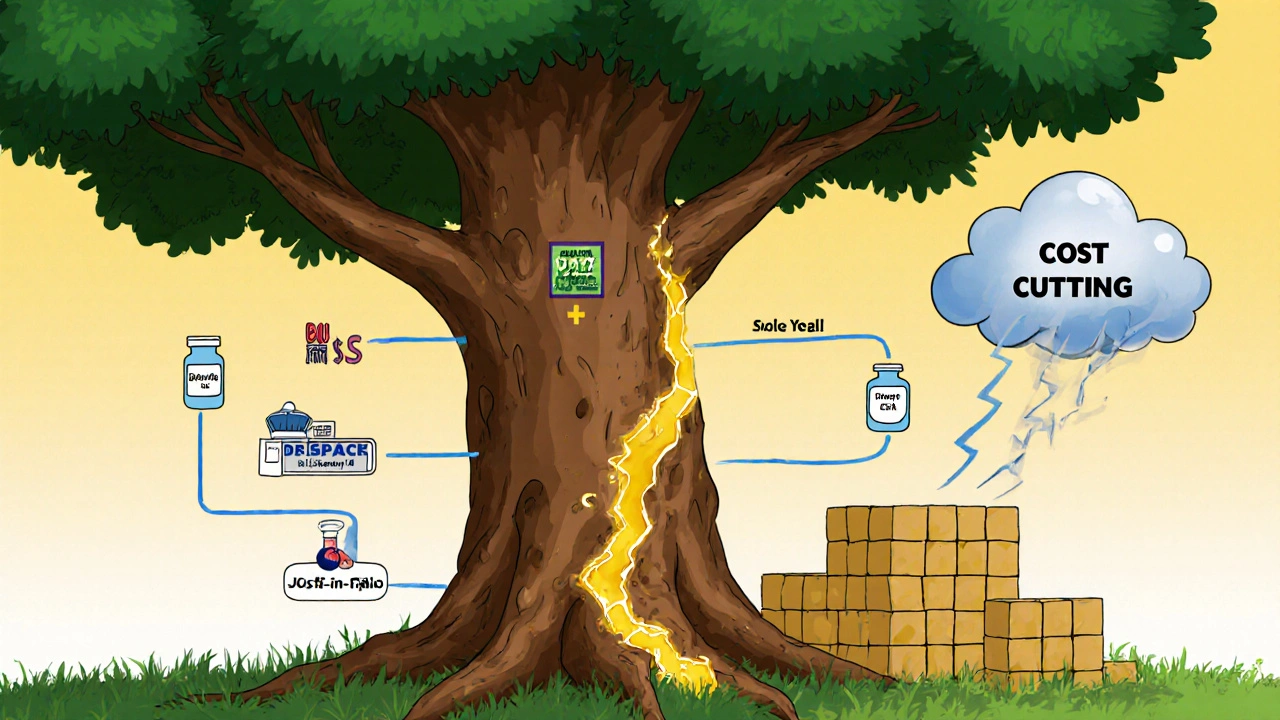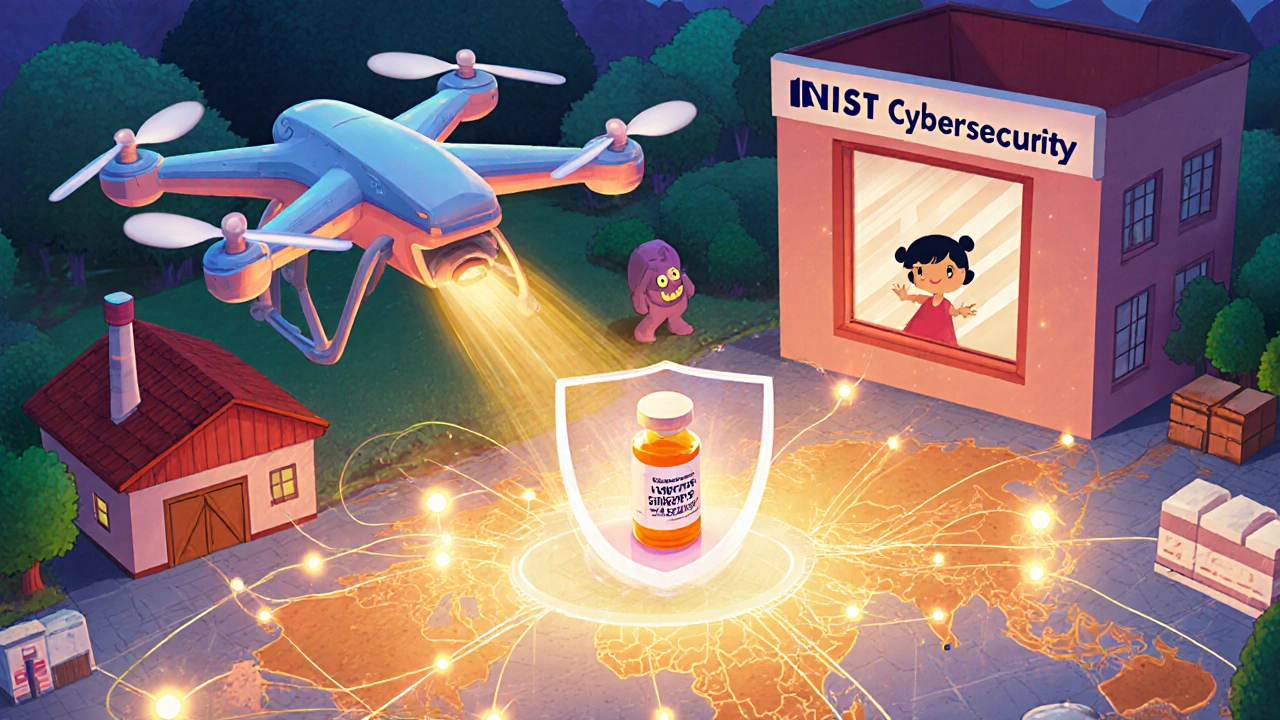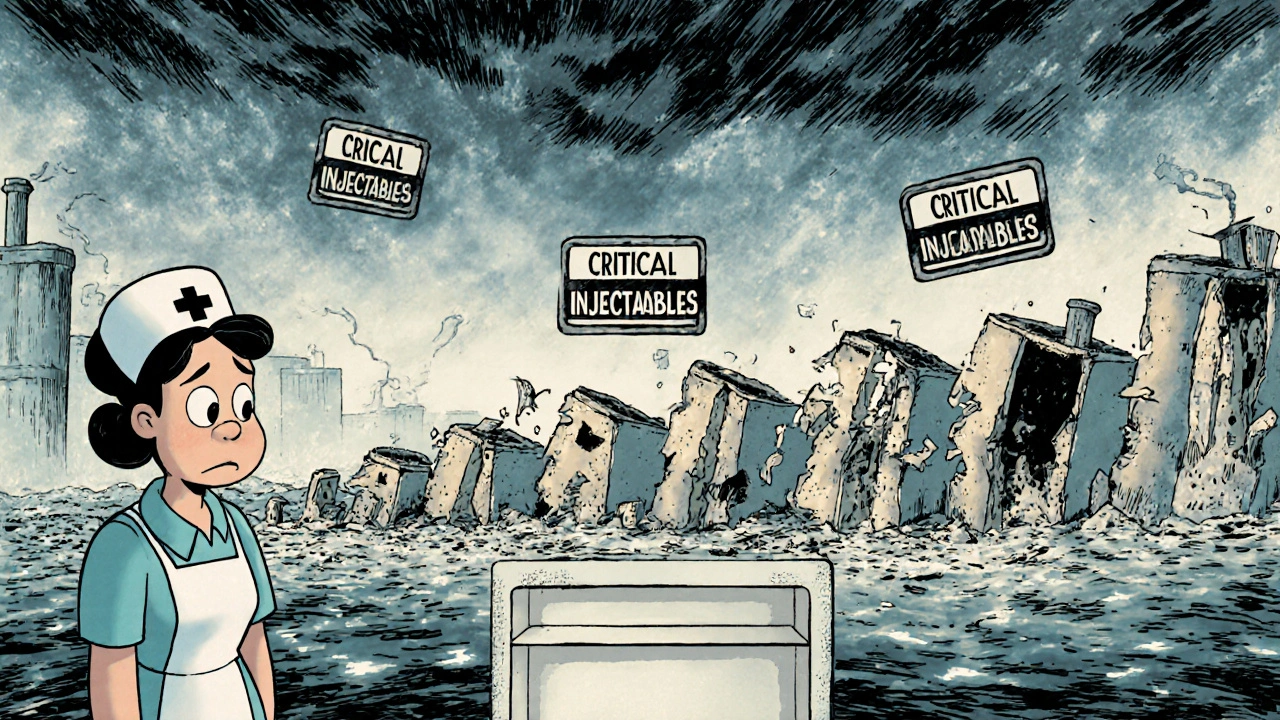Every year, hundreds of life-saving drugs vanish from hospital shelves. Not because they’re no longer needed, but because the system that makes and moves them broke down. In 2022 alone, the FDA recorded 245 drug shortages, with over half involving sterile injectables used in emergency rooms, surgeries, and cancer treatments. These aren’t minor inconveniences-they’re medical emergencies waiting to happen. A patient with sepsis can’t wait weeks for a replacement antibiotic. A child with leukemia can’t pause treatment because the IV solution ran out. The truth is, we’ve been treating drug shortages like temporary glitches. But they’re symptoms of a deeper, systemic failure. The solution isn’t more emergency orders or last-minute fixes. It’s building resilience into the drug supply from the ground up.
Why the Drug Supply Is So Fragile
The global pharmaceutical supply chain was built for efficiency, not safety. For decades, companies chased the lowest cost per pill, moving manufacturing overseas to countries like China and India, where labor and regulatory costs were lower. Today, 72% of active pharmaceutical ingredients (APIs) for U.S. drugs come from outside the country. Nearly 30% come from just two nations. That sounds fine until a flood shuts down a factory in India, a trade dispute blocks exports, or a cyberattack cripples a logistics hub. Then, the whole system freezes. What made this worse was the shift to just-in-time inventory. Hospitals and distributors stopped keeping extra stock. Why? Because storing drugs costs money. But when a single supplier fails, there’s no backup. The result? Hospitals scramble. Patients get substituted with less effective drugs. Some get nothing at all.What Resilience Actually Means
Resilience isn’t just having a backup plan. It’s designing the entire system to absorb shocks without breaking. The National Academies of Sciences laid out a clear framework: resilience is built on three pillars-anticipation, planning, and risk mitigation. That means knowing what could go wrong before it happens, designing your supply chain to handle it, and having tools ready to act fast. Take buffer stockpiling. For critical drugs like epinephrine or sodium bicarbonate, keeping 6 to 12 months of supply isn’t excessive-it’s essential. But most companies don’t do it because it ties up capital. The cost? An estimated $216 million a year in extra hospital expenses from rushed purchases, overtime, and emergency transports. The payoff? Fewer lives at risk. Then there’s supplier diversification. If you rely on one factory for a key API, you’re one disaster away from a shortage. The rule of thumb? At least three suppliers, spread across different continents. Merck, for example, used federal incentives to shift 12 critical antibiotics to U.S.-based production. It cost more-31% higher-but now they’re not hostage to overseas delays.Domestic Production vs. Global Diversification
The loudest call in recent years has been to bring drug manufacturing back to the U.S. It sounds patriotic. It feels safe. But it’s not that simple. Reshoring API production can raise costs by 25% to 40%. That’s not sustainable for every drug. You don’t need to make every pill at home. The smarter approach is targeted reshoring. Focus on the drugs that matter most: injectables, cancer meds, antibiotics, and anesthetics. For everything else, diversify globally. Kearney’s 2024 analysis showed that spreading manufacturing across multiple countries-say, the U.S., India, Germany, and South Korea-gives you 70% of the protection of full reshoring, at only a 15% to 20% cost increase. This hybrid model, backed by the Duke-Margolis Center, could prevent 85% of critical shortages for $1.2 billion to $1.8 billion a year. Compare that to stockpiling alone-costing $3.5 billion to $4.2 billion annually but only preventing 45% of shortages. The math doesn’t lie. You need both, but you need them in the right balance.
Visibility: The Blind Spot Nobody Talks About
Most companies know who their direct suppliers are. But few know who supplies those suppliers. That’s called Tier 3 visibility-raw material sources, chemical producers, packaging makers. Only 12% of pharmaceutical companies have it. That’s like trying to fix a car without knowing where the engine parts came from. Without this visibility, you can’t predict a disruption. If a mine in Australia shuts down and cuts off a key metal used in a drug’s coating, you won’t know until your supplier runs out. That’s why supply chain mapping is the highest-return investment in resilience. Companies with full visibility report 32% fewer disruptions, even though they spend less than 8% of their resilience budget on it. New AI tools are making this easier. By 2023, 58% of pharmaceutical firms used AI for demand forecasting and disruption modeling-with 83% accuracy for 30-day windows. Pfizer used AI across 150 distribution centers and cut stockouts by 38%. But it took $220 million and 18 months. The key isn’t the tech-it’s the data. Clean, shared, real-time data across every partner in the chain.Cybersecurity Is Part of the Supply Chain
A factory can be safe, but if its computer system gets hacked, the whole line stops. Between 2020 and 2023, cyberattacks on healthcare supply chains jumped 214%. Ransomware can lock down a warehouse. Phishing can redirect shipments. A single breach can delay dozens of drugs. The solution isn’t just firewalls. It’s integration. The Healthcare Distribution Alliance says coordinated threat-sharing between companies and government agencies cuts response time by 47%. That means real-time alerts when a supplier’s network shows unusual activity. It means requiring all partners to meet the NIST Cybersecurity Framework. This isn’t optional anymore. It’s as critical as GMP compliance.Regulations Are Finally Catching Up
For years, the FDA warned. Congress debated. But little changed. Now, action is happening. The Drug Supply Chain Security Act (DSCSA) requires full electronic tracking of every drug package by 2024. That’s a game-changer. No more paper trails. No more lost boxes. Every vial can be traced back to its origin. The FDA’s 2023 draft guidance now requires manufacturers to do annual vulnerability assessments. By Q3 2025, every company must prove they’ve mapped their risks and have a plan. And it’s not just the U.S. The European Medicines Agency has pushed its own resilience standards, forcing global manufacturers to run parallel supply chains for Europe and America. Even bigger? CMS’s 2024 proposed rule. It would tie Medicare reimbursement to supply chain transparency. If you can’t show where your drugs come from, you won’t get paid. That affects $80 billion in annual spending. Suddenly, resilience isn’t a cost center-it’s a revenue requirement.

Comments
Sophia Lyateva
This is all a distraction. The real reason drugs are disappearing? The government is secretly controlling the supply to push people toward vaccines. They don't want you healthy, they want you dependent. Look at the history of the FDA-they've been hiding this since the 90s.
On November 26, 2025 AT 02:28
David Ross
I'm sick of this nonsense. We're outsourcing everything to China and India, then acting shocked when the supply chain collapses. We're a superpower-why are we letting foreign nations hold our medicine hostage? It's treasonous. We need to nationalize every API plant and put the military in charge. No more 'cost efficiency'-national security comes first.
On November 26, 2025 AT 16:03
AARON HERNANDEZ ZAVALA
I get where both sides are coming from. The fear of foreign dependency is real, but so is the cost of reshoring everything. Maybe we don't need to pick one or the other-what if we just made sure every critical drug had at least two suppliers, one domestic, one in a stable ally country? It's not perfect, but it's better than waiting for a flood in Mumbai to kill a kid's chemo supply.
On November 26, 2025 AT 17:15
Lyn James
You're all missing the deeper truth: this isn't about supply chains-it's about the decay of moral responsibility in capitalism. We've turned human life into a spreadsheet line item. We optimize for profit, not for survival. When a child needs epinephrine and the CFO decides it's 'not cost-effective' to stockpile, that's not a business decision-that's a soulless act of violence disguised as economics. We've forgotten that medicine isn't a commodity-it's a covenant between society and the sick.
On November 26, 2025 AT 23:23
Craig Ballantyne
The data on Tier 3 visibility is compelling. The 32% reduction in disruptions correlates strongly with end-to-end traceability. However, the ROI is contingent on interoperability standards across stakeholders. Without ISO 15189-compliant data exchange protocols, even AI-driven forecasting will remain siloed and inefficient.
On November 27, 2025 AT 04:05
Victor T. Johnson
We've been lied to for decades. The 'global supply chain' was never about efficiency-it was about corporate greed. Pharma giants moved production overseas to avoid regulations, then charged us more because we had no choice. Now they want us to pay billions to fix what they broke. I'm not funding their bailout. They should've invested in resilience when they had the profit. Now they get to live with the consequences. 💥
On November 29, 2025 AT 03:00
Nicholas Swiontek
This is actually really hopeful. We have the tech, the data, the policy tools-we just need to align incentives. Imagine if hospitals rewarded suppliers who kept buffer stock with longer contracts. Or if insurers gave discounts to clinics that used drugs from diversified sources. Small changes, big impact. We don't need a revolution-we need a reset. 🙌
On November 29, 2025 AT 07:20
Robert Asel
The assertion that 'resilience costs more' is a fallacy. The true cost of a drug shortage is not merely the price differential-it is the marginal utility lost per patient life compromised. A 2021 JAMA study estimated the societal cost of a single critical shortage event at $1.7 million, inclusive of morbidity, mortality, and legal liability. Therefore, the proposed $2.1 billion annual investment is not an expense-it is an act of actuarial prudence.
On November 29, 2025 AT 11:42
Shannon Wright
Let’s not forget the people behind this. The factory workers in Ohio who retrained to make APIs. The pharmacists in rural clinics who stayed up all night tracking down vials. The logistics teams who flew drugs in on private jets because the UPS driver couldn’t get there in time. This isn’t just policy-it’s about honoring the quiet heroes who show up when everything falls apart. We owe them more than lip service. We owe them systems that don’t make them choose between sleep and survival.
On December 1, 2025 AT 07:32
vanessa parapar
Oh please, you think this is new? I’ve been in this industry for 20 years. Every time there’s a shortage, everyone acts like it’s the first time. The truth? It’s been happening since the 80s. The only difference now is that social media makes it visible. But no one wants to fix it because the people who profit from the chaos are the ones writing the rules. You think Congress cares? They get donations from the same pharma execs who moved the factories overseas.
On December 3, 2025 AT 01:08
Ben Wood
You people are naive. The entire system is a controlled demolition. The FDA, the WHO, the pharmaceutical conglomerates-they're all in bed together. They want you dependent on their overpriced, understocked drugs. Why? Because when you're sick, you're easy to control. The 'shortages' are engineered. They're not accidents-they're incentives to buy their next-gen 'solution' drugs. You think AI mapping is helping? It's just a distraction so you don't notice the real players pulling the strings.
On December 3, 2025 AT 08:15
Sakthi s
India makes 40% of global generics. Shutting us out won't fix anything. Build partnerships, not walls.
On December 3, 2025 AT 15:58
Rachel Nimmons
I read somewhere that the same companies that moved production overseas also funded the FDA’s lax oversight. Coincidence? I don’t believe in coincidences. There’s a pattern here. And it’s not accidental.
On December 4, 2025 AT 23:58
Abhi Yadav
The system is broken because we stopped seeing people as humans. We turned medicine into a derivative. A commodity. A hedge. We are not just losing drugs-we are losing our soul. And no amount of AI or buffer stock will bring that back. 🌑
On December 5, 2025 AT 14:59
Julia Jakob
I just watched a nurse cry because she had to tell a mom her kid’s chemo was delayed. No one talks about that part. The quiet horror. The guilt. The way your hands shake when you can’t fix it. This isn’t policy. This is trauma. And we’re ignoring it like it’s not real.
On December 5, 2025 AT 16:25